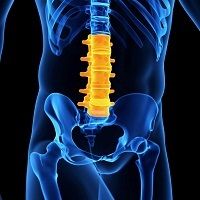Shock Wave Therapy Effective for Coccydynia
Study results suggest that extracorporeal shock wave therapy may be an effective pain reliever for patients suffering from coccydynia.

A Chinese study in PLOS One suggests that extracorporeal shock wave therapy (ESWT) may be an effective pain reliever for patients suffering from coccydynia.
The finding is of interest because pain of the coccyx, often caused by falls, can be very difficult to treat without surgery. Patients who do opt for surgery, which involves the excision of the mobile coccyx or a total coccygectomy, are relieved of their pain in the vast majority of cases, but the surgery comes with potential complications, including wound infection. Thus, the surgery is rarely performed, and nonsurgical strategies remain the major treatment option. Other methods of treatment include nonsteroidal anti-inflammatory agents (NSAIDs), gentle massage over the ligaments attached to the sacrococcygeal joint, or shortwave diathermy.
This is the first substantive study to look at the effectiveness of ESWT in treating coccydynia. ESWT is perhaps best known as a treatment for breaking up kidney and gall stones, but it has also been used with some success as non-invasive therapy in patients suffering from plantar fasciitis, epicondylitis, and shoulder calcification, despite the fact that its mechanism for relieving pain is not well-understood. “The effectiveness of pain relief with ESWT might be due to stimulation analgesia and increased tissue regeneration,” the study authors posit.
A total of 50 participants were screened for the current study, with 42 meeting the inclusion criteria. The basic demographic features and duration of coccygeal pain were recorded. Before treatment, all of the patients reported their pain intensity, using a visual analog scale (VAS), on a scale from 0 through 100 mm (0 for no pain and 100 mm for the worst pain). Disability and pain were measured using a spinal disorder-specific questionnaire.
Patients were randomly allocated to an ESWT group (n = 20) or physical modality, and were treated for 4 weeks. The VAS and ODI scores were significantly decreased after treatment in both groups, and the decrease in the VAS score was significantly greater in the ESWT group. The mean proportional changes in the ODI scores were greater in the ESWT group than in the physical modality group, but the between-group difference was not statistically significant. The patients in the ESWT group had significantly higher subjective satisfaction scores than the other group.
“Considering the effect of ESWT on reducing the inflammatory response, this non-invasive treatment modality might be beneficial for treating patients with coccydynia,” the study authors conclude. “Patients receiving ESWT visited the hospital once each week for 4 weeks. Conversely, patients receiving physical modalities visited the hospital 3 times per week. The patients’ subjective satisfaction was better in the ESWT group, most likely because they had better treatment outcomes with fewer hospital visits and less time spent.”
Limitations include the diverse etiologies of coccydynia should be studied with different treatments and small sample size.